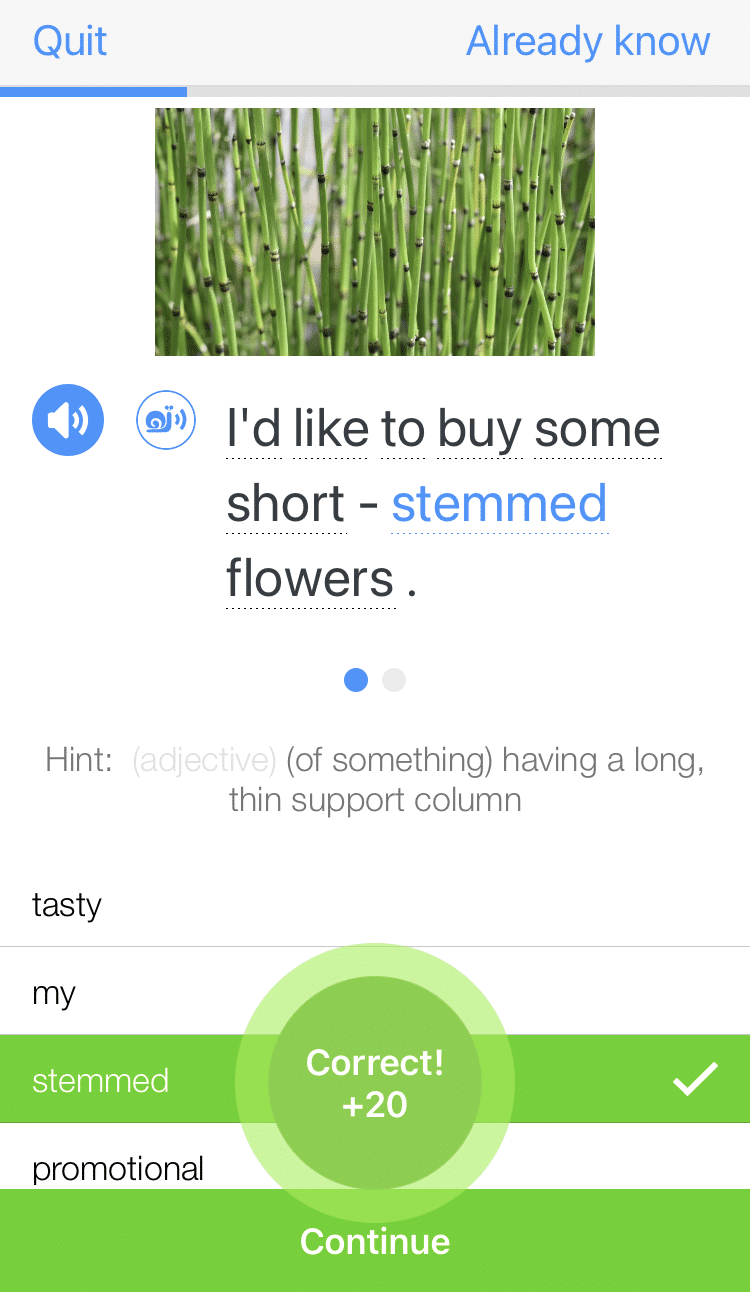Contents
- 1. Build the Essay Around a Central Question
- 2. Use the Traditional 5-paragraph Essay Structure
- 3. Plan the Essay Carefully Before Writing
- 4. Encourage Research and Rewriting
- 5. Practice Utilizing Repetition
- 6. Aim to Write a “Full Circle” Essay
- 7. Edit the Essay to the End
- ESL Essay Writing Resources
- And One More Thing...
ESL Essay Writing: 7 Important Tips

An essay needs a coherent structure to successfully articulate its arguments. Strong preparation and planning are crucial to providing that structure.
Of course, essay writing can be challenging for ESL students. They must order their thoughts and construct their arguments—all in their second language.
Here are seven ESL essay writing tips that will allow your students to weave together a coherent and persuasive essay, plus teacher resources for writing activities, prompts and lessons.
Download: This blog post is available as a convenient and portable PDF that you can take anywhere. Click here to get a copy. (Download)
1. Build the Essay Around a Central Question
Encourage your students to build all their writing around one central question.
That central question is the engine of the writing—it should drive everything!
If a word or sentence is not assisting that forward motion toward the explication of that question and its possible answers, then it needs to be reworded, rephrased or just plain cut out and discarded.
Lean writing is merciless. Focusing on a central question throughout the prewriting, writing and rewriting stages helps develop the critical faculties required to discern what to keep and what to throw away.
2. Use the Traditional 5-paragraph Essay Structure
Providing a clear structure for the student to approach essay writing can do a lot to build their confidence. The 5-paragraph essay, or “hamburger” essay, provides that clear structure for ESL writers.
Generally, this structure employs five separate paragraphs for the entire essay. Each paragraph serves a specific purpose, melding together to form a coherent whole:
- Paragraph 1: The introductory paragraph. This includes the thesis statement, orientating the reader to the purpose of the essay.
- Paragraphs 2 to 4: The body paragraphs. These make individual points that are further backed up by various forms of evidence.
- Paragraph 5: The conclusion paragraph. This provides a summation of the arguments and a final statement of the thesis.
While students do not need to rigidly follow this format forever, the simple structure outlined above can serve as excellent training wheels for your writers.
3. Plan the Essay Carefully Before Writing
Using the 5-paragraph structure as outlined above makes planning clear cut.
Once they have their theses and are planning their paragraphs, share with the students the ridiculously useful acronym P.E.E. This stands for Point, Explanation and Evidence.
Each body paragraph should make a point or argument in favor of the central thesis, followed by an explanation of this point and relevant evidence to back it up.
Students can make note of all their points, explanations and evidence before they start writing them in essay form. This helps take away some of the pressure ESL writers feel when faced with a blank page.
Extol the necessity for students to constantly refer to their planning. The mind-mapping techniques popularized by Tony Buzan can be useful at the planning stage and make for easy reference points to ensure focus is maintained throughout the essay.
Having a visual reference such as this can help ensure that your student-writers see each piece of the whole as well as that elusive “bigger picture,” so it becomes a case of seeing the forest and the trees!
4. Encourage Research and Rewriting
Just as planning is crucial, so too is research.
Often ideas or connections do not occur until the writing process has begun. This is a good thing! Essay writing is a creative act, so students can have more ideas along the way and work them in as they go.
The key is to always be able to back up these ideas. Students who have done their research on their subject will be much more confident and articulate in expressing their arguments in their writing.
One way you can help students with context and research is to show relevant video content via FluentU.
FluentU takes authentic videos—like music videos, movie trailers, news and inspiring talks—and turns them into personalized language learning lessons.
You can try FluentU for free for 2 weeks. Check out the website or download the iOS app or Android app.
P.S. Click here to take advantage of our current sale! (Expires at the end of this month.)

You can watch videos as a class or assign them directly to students for individual viewing. Videos come equipped with interactive bilingual subtitles and other learning tools such as multimedia flashcards and personalized quizzes so you can see how each student is doing.
No matter how your students do their research, the important thing is that they explore and understand their topic area before beginning the big task of writing their essay.
Even with thorough planning and research, writing oneself into a linguistic cul-de-sac is a common error. Especially with higher-level students, unforeseen currents can pull the student-writer off course.
Sometimes abandoning such a sentence helps. Going back to the drawing board and rewriting it is often best.
Students can be creative with their sentence structures when expressing simpler ideas and arguments. However, when it comes to more complex concepts, help them learn to use shorter sentences to break their arguments into smaller, more digestible chunks.
5. Practice Utilizing Repetition
Essay writing falls firmly in the camp of non-fiction. However, that doesn’t mean that essay writers can’t use some of the techniques more traditionally associated with fiction, poetry and drama.
One technique that’s particularly useful in essay writing is repetition. Just as poetry relies heavily on rhythm, so too does argument. Repetition can provide that sense of rhythm.
This is because written language has its origins in oral language. Think of the great orators and demagogues and their use of repetition. Speechwriters, too, are well aware of the power of repetition.
The writing principle of the “rule of 3” states that ideas expressed in these terms are more convincing and memorable. This is true of both spoken and written words and the ideas they express. Teach your students to use this method in their essay writing.
The very structure of the 5-paragraph essay lends itself to planning for this repetition, in fact. Each idea that is explored in a body paragraph should be outlined first in the introductory paragraph.
Then, the single body paragraph devoted to the idea will explore it at greater length, supported by evidence. And the third rap of the hammer occurs in the summation of the concluding paragraph, driving the point securely and convincingly home.
6. Aim to Write a “Full Circle” Essay
As mentioned at the start of this post, every good essay has a beginning, a middle and an end.
Each point made, explained and supported by evidence is a step toward what the writing teacher Roy Peter Clark calls “closing the circle of meaning.”
In planning for the conclusion of the essay, the students should take the opportunity to reaffirm their position. By referring to the points outlined in the introduction and driving them home one last time, the student-writer is bringing the essay to a satisfying full circle.
This may be accomplished by employing various strategies: an apt quotation, referring to future consequences or attempting to inspire and mobilize the reader.
Ending with a succinct quotation has the double benefit of lending some authoritative weight to the argument while also allowing the student to select a well-written, distilled expression of their central thesis. This can make for a strong ending, particularly for ESL students.
Often the essay thesis will suggest its own ending. If the essay is structured around a problem, it’s frequently appropriate to end the essay by offering solutions to the problem and outlining potential consequences if those solutions are not followed.
In the more polemical type of essay, the student may end with a call to arms, a plea for action on the part of the reader.
The strategy chosen by the student will depend largely on what fits the central thesis of their essay best.
7. Edit the Essay to the End
For the ESL student, the final edit is especially important.
It offers a final chance to check form and meaning. For all writers, this process can be daunting, but more so for language students.
Often, ESL students will use the same words over and over again due to a limited vocabulary. Encourage your students to employ a thesaurus in the final draft before submission. This will freshen up their work, making it more readable, and will also increase their active vocabulary in the long run!
Another useful strategy at this stage is to encourage students to read their work aloud before handing it in.
This can be good pronunciation practice, but it also provides an opportunity to listen for grammatical errors. Further, it helps students hear where punctuation is required in the text, helping the overall rhythm and readability of the writing.
ESL Essay Writing Resources
To really help your students become master essay writers, you’ll want to provide them with plenty of opportunities to test and flex their skills.
Writing prompts and exercises are a good place to start:
50+ ESL Writing Prompts | FluentU English Educator Blog
Giving good ESL writing prompts is important because inspiring prompts inspire students to write more and writing more is how they improve. Read this post to learn 50…
You’ll likely also want to teach them more about the mechanics of writing:
11 Techniques to Boost Your Students’ ESL Writing Skills
The writer, an almost mythical creature—alone and aloof, at the mercy of some ethereal muse and her whims. How can we hope to inculcate the skills of the mysterious…
Essays are a great way not only for students to learn how the language works, but also to learn about themselves.
Formulating thoughts and arguments about various subjects is good exercise for not only the students’ linguistic faculties, but also for understanding who they are and how they see the world.
Download: This blog post is available as a convenient and portable PDF that you can take anywhere. Click here to get a copy. (Download)
And One More Thing...
If you like learning English through movies and online media, you should also check out FluentU. FluentU lets you learn English from popular talk shows, catchy music videos and funny commercials, as you can see here:
The FluentU app and website makes it really easy to watch English videos. There are captions that are interactive. That means you can tap on any word to see an image, definition, and useful examples.
For example, when you tap on the word "searching," you see this:
Learn all the vocabulary in any video with quizzes. Swipe left or right to see more examples for the word you’re learning.

FluentU helps you learn fast with useful questions and multiple examples. Learn more.
The best part? FluentU remembers the vocabulary that you’re learning. It gives you extra practice with difficult words—and reminds you when it’s time to review what you’ve learned. You have a truly personalized experience.
Start using the FluentU website on your computer or tablet or, better yet, download the FluentU app from the iTunes or Google Play store. Click here to take advantage of our current sale! (Expires at the end of this month.)










